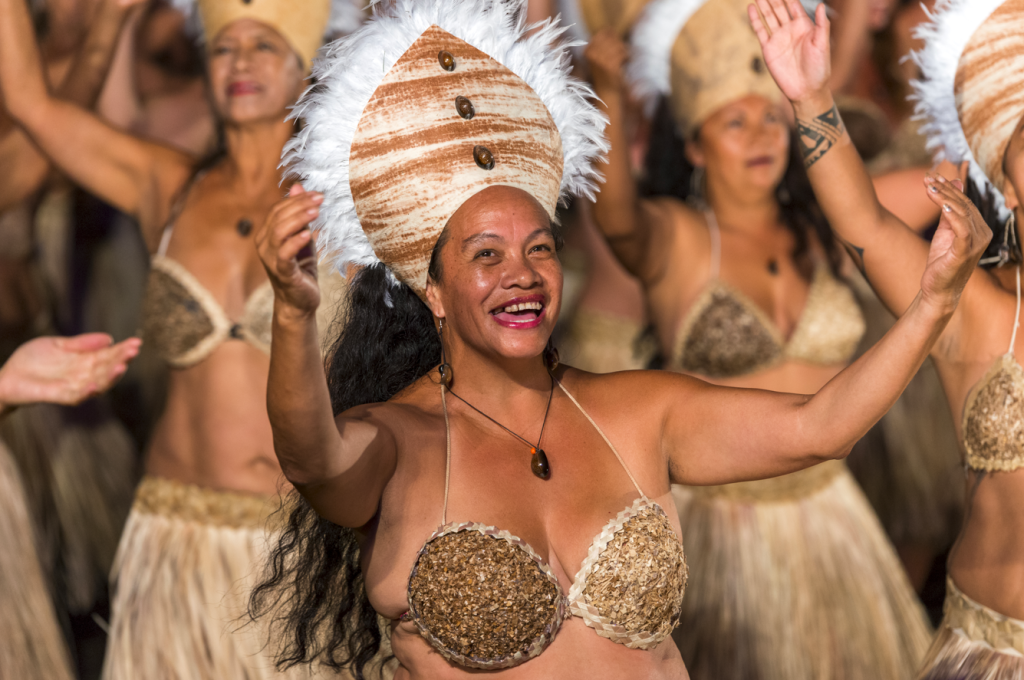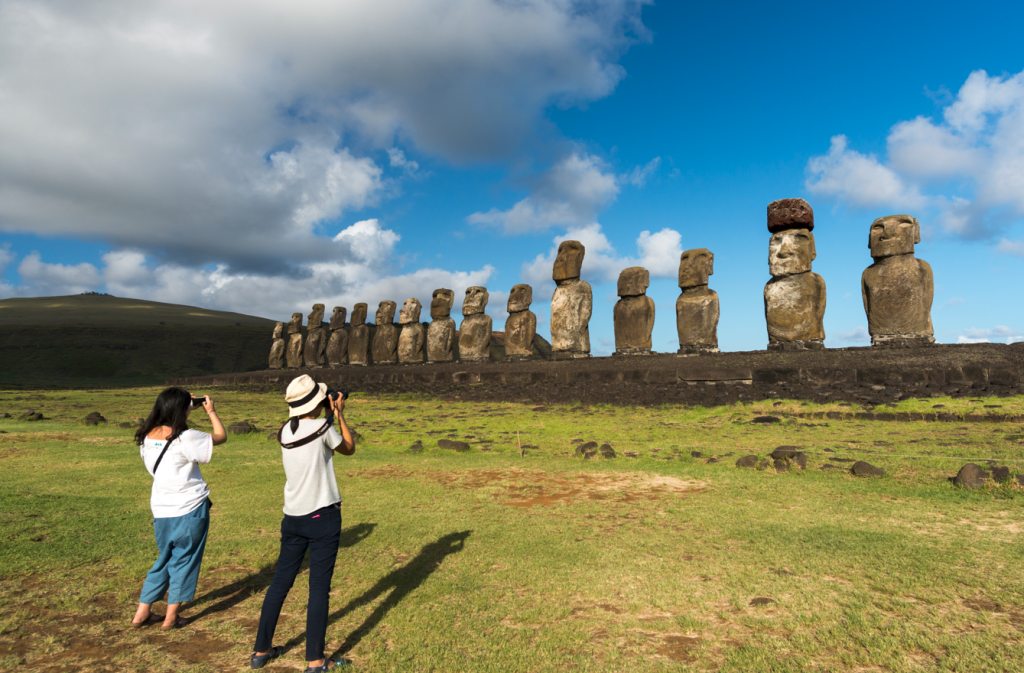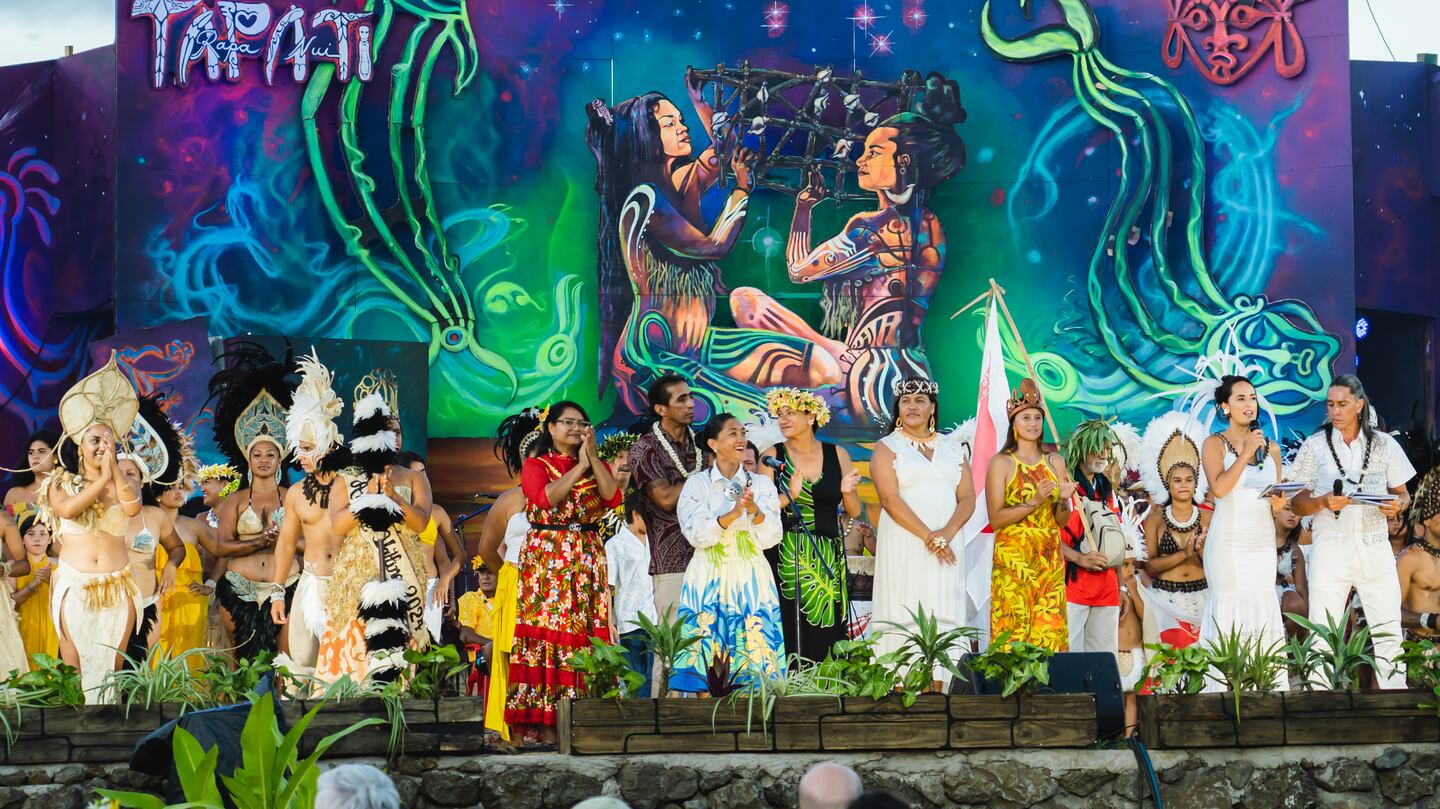Every year, from late January to mid-February, Rapa Nui transforms. It’s not just a festival. It’s a tribute to the island’s history, a powerful expression of cultural identity, and an invitation to be part of a living legacy. This is Tapati Rapa Nui — the island’s most important cultural celebration and one of the most iconic festivals in all of Polynesia.

A Celebration Born from History
Tapati began in the 1960s, during a pivotal moment for the Rapa Nui people — the official recognition of Chilean citizenship for island residents in 1966. In that context, the need to preserve and strengthen the cultural identity of the native community became urgent.
What started as a small local gathering gradually grew into a proud and vibrant expression of cultural resistance. Today, Tapati is far more than a party — it’s the beating heart of Rapa Nui, pulsing every summer.
The festival also reimagines the ancient Tangata Manu (Birdman) ceremony. However, the central tradition now revolves around a competition between two young women who represent their clans and vie to be crowned Queen of Tapati. Their families and communities actively support them in sporting, artistic, and cultural challenges. The final decision lies in the hands of local judges and respected community elders.

What Does Tapati Represent?
The word Tapati comes from tapa, meaning “dedicated to” in the Rapa Nui language. The name itself symbolizes what the festival is all about: a celebration dedicated to Rapa Nui. For two weeks, the island honors its ancestors, its history, its values, and its unique worldview.

A Mosaic of Ancestral Traditions
Tapati is not just a spectacle — it’s a deeply communal experience. Children, youth, adults, and elders all take part, keeping ancestral traditions alive. More than 40 artistic and cultural expressions are practiced and taught, turning the entire island into a vibrant stage for intergenerational knowledge-sharing.
Some of the most exciting and meaningful activities include:
- Sports competitions: horse races, Polynesian canoe races, triathlons, and swimming events.
- Traditional crafts: wood carving, floral crown making, ancestral costume design, and weaving with natural fibers.
- Dance and music: the heart of the festival, sharing stories and values through rhythm and movement.
- Body art and tattoos: using natural pigments and symbols to revive ancient narratives.
How Can Visitors Take Part?
One of the most beautiful aspects of Tapati is that it’s not just for locals. While it is deeply rooted in community life, visitors are welcomed with open arms and can engage in many ways:
- Attend the events: Most competitions and performances are free and open to the public.
- Join parades and ceremonies: Participate in the opening parade supporting the candidates, watch the ancestral costume parades, or experience the closing ceremony.
- Take part in cultural workshops: Some are open to tourists and offer hands-on learning of traditional Rapa Nui arts.
- Explore with a local guide: The best way to truly understand the depth of each activity is to hear it explained by someone who lives the culture daily.
Art, Culture & Wellbeing at the Heart of Tapati
Each year, Tapati Rapa Nui unveils an official festival poster designed by talented local artists. These artworks reflect a special theme that also inspires the main stage design in Hanga Vare Vare, located next to the cemetery. This space becomes the cultural and artistic epicenter of the celebration.
The stunning visuals created each year bring spirit and atmosphere to the event, offering a one-of-a-kind immersive experience.
In the same location, a food fair is set up with something for everyone: gluten-free options, vegetarian dishes, local meats, fresh juices, and delicious desserts. The culinary diversity promotes inclusive eating and supports community well-being.
Local brands — many with deep ties to the island — also join the celebration, incorporating ancestral heritage into their products and championing sustainable, respectful tourism. In recent years, a commitment to health and safety has led to the prohibition of alcohol sales and designated smoke-free areas — making the festival a safe, welcoming space for everyone.
Tapati Rapa Nui 2025: A Vibrant and Authentic Celebration
The most recent edition, held from February 1–14, 2025, was truly unforgettable. Two standout candidates, Pua Ativeka Tucki Hey and Mahatu De Rycke Atan, competed with charisma and dedication — embodying the strength and unity of the Rapa Nui community.
Over those two weeks, the island came alive with music, dance, and ancestral competitions — including the famous Tau’a Rapa Nui, a challenging triathlon, and the breathtaking Haka Pei, where brave young men speed downhill on banana trunks.
Evenings were filled with traditional performances like:
- Takona: a body painting contest using natural pigments.
- Koro haka opo: group singing competitions showcasing ancient chants.
- Kai Kai: a storytelling art form using knotted string figures to pass on myths and legends.
Looking Ahead to Tapati 2026
Excitement is already building for Tapati Rapa Nui 2026, which promises to be another powerful celebration of culture, tradition, and community spirit. As always, it’s an open invitation for travelers from all over the world to dive into the authenticity and magic of Rapa Nui.
Tapati is not a tourist show. It is a living, evolving expression of a millennia-old culture — one that refuses to fade and continues to pass from elders to youth, from heart to heart.
Come experience Tapati Rapa Nui. Feel its energy, taste its food, dance to its rhythms, and connect with its people. A once-in-a-lifetime journey into the soul of an extraordinary island. We’ll see you on Rapa Nui!



